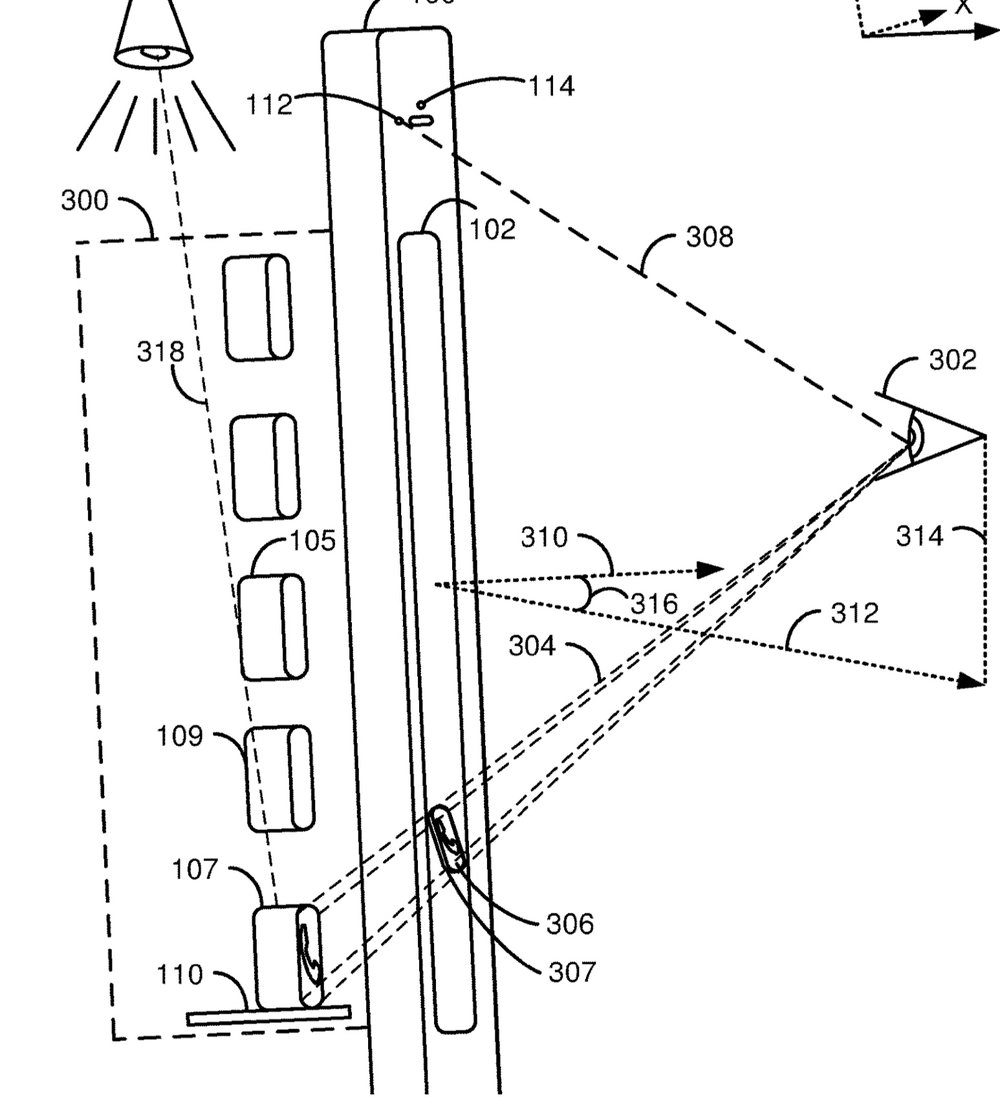Future iOS and macOS devices could sport a 3D interface — or at least an interface with three-dimensional elements. The company has filed for a patent (number 9,778,815) for “three dimensional users interface effects on a display.”
Here’s Apple’s summary of the patent: “The techniques disclosed herein may use various sensors to infer a frame of reference for a hand-held device. In fact, with various inertial clues from accelerometer, gyrometer, and other instruments that report their states in real time, it is possible to track a Frenet frame of the device in real time to provide an instantaneous (or continuous) 3D frame-of-reference. In addition to–or in place of–calculating this instantaneous (or continuous) frame of reference, the position of a user’s head may either be inferred or calculated directly by using one or more of a device’s optical sensors, e.g., an optical camera, infrared camera, laser, etc. With knowledge of the 3D frame-of-reference for the display and/or knowledge of the position of the user’s head, more realistic virtual 3D depictions of the graphical objects on the device’s display may be created–and interacted with–by the user.”

In the patent filing, Apple notes that video games now use various properties of motion and position collected from compasses, accelerometers, gyrometers, and Global Positioning System (GPS) units in hand-held devices or control instruments to improve the experience of play in simulated, i.e., virtual, 3D environments. In fact, software to extract so-called “six axis” positional information from such control instruments is well-understood, and is used in many video games today.
Face detection software is also well-understood in the art and is applied in many practical applications today including: digital photography, digital videography, video gaming, biometrics, surveillance, and even energy conservation. However, Apple says that current systems don’t take into account the location and position of the device on which the virtual 3D environment is being rendered in addition to the location and position of the user of the device, as well as the physical and lighting properties of the user’s environment in order to render a more interesting and visually pleasing interactive virtual 3D environment on the device’s display. The company says there’s a need for techniques for tracking the movement of an electronic device having a display, as well as the lighting conditions in the environment of a user of such an electronic device and the movement of the user of such an electronic device–and especially the position of the user of the device’s eyes and/or head.
Of course, Apple files for — and is granted — lots of patents by the U.S. Patent & Trademark Office. Many are for inventions that never see the light of day. However, you never can tell which ones will materialize in a real product.
